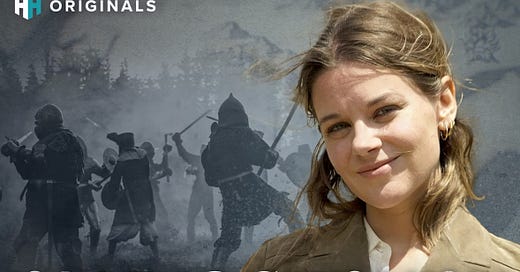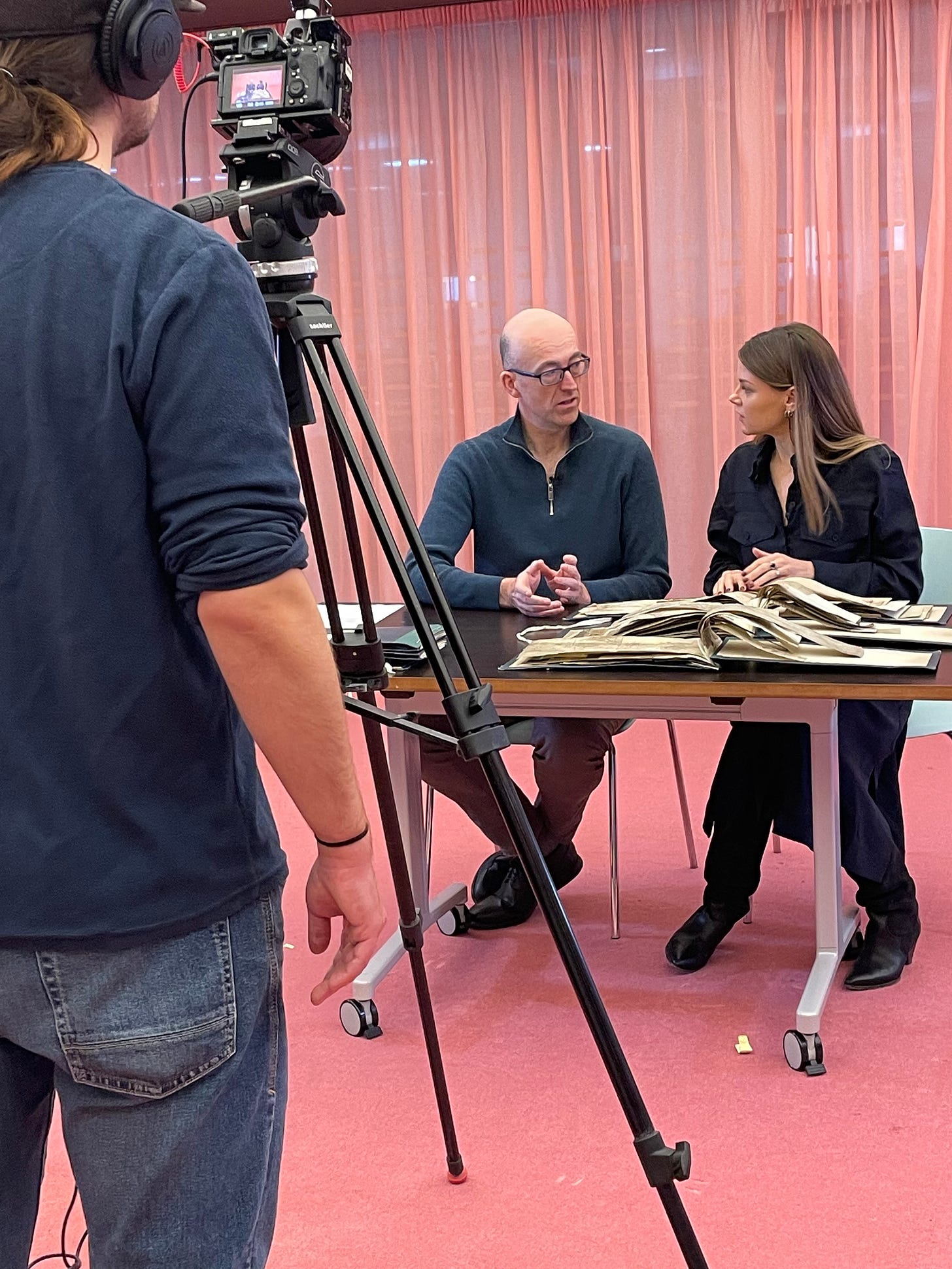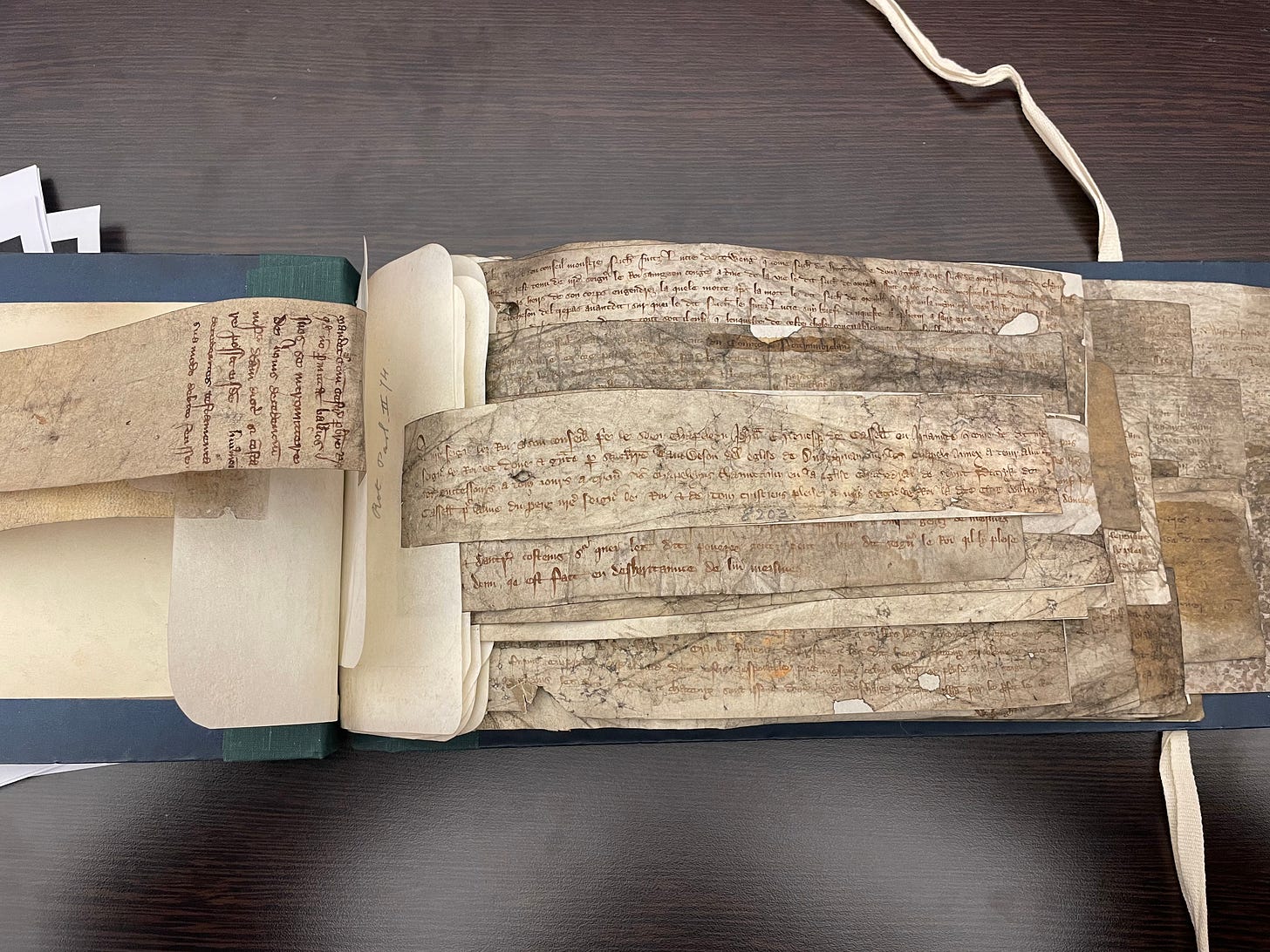The Battle for Scotland
Bannockburn and its lasting legacy - BTS of my new documentary and a sneak peak inside my new book.
Last year I spent a week travelling around Stirling and Berwick filming a new documentary for HistoryHit which was released yesterday. The focus was the Battle of Bannockburn and why that particular battle, more than any other, has become indelibly woven into Scottish national identity.
I loved filming this documentary. Not only because Scotland is one of my favourite places in the world — its history, landscape and people are *chef’s kiss* — but I got to combine my doctoral work on border petitions, nerding out at The National Archives with some of my favourite documents.
To get a sense of the whole story we travelled to the site of the battle — spoiler alert, it’s now a housing estate — cross the eponymous Burn and visit the lofty heights of Stirling Castle. Finally we travelled to Berwick on Tweed where I was able to climb the castle ruins and reimagine the bastion it once was. The hawk-eyed among you might notice the intensity of the wind, which whilst filming (with long hair) became a form of torture.
I had drafted my chapter about Bannockburn before filming, but my experience in Scotland totally reshaped how I considered the way it played out and why Robert Bruce was so successful. Please consider signing up to HistoryHit to watch the full documentary — it even gripped my 7yo — and as a SPECIAL TREAT I am sharing a delicious morsel from my new book (below), where I narrate what took place.
Enjoy!
H x
The Road to Bannockburn
Dawn broke on 24 June and the morning fog slowly dissipated. The English army had already crossed the burn from the west under the cover of darkness and by sunrise were lined up to do battle. Overnight, Robert Bruce marched his men entirely on foot from the New Park Wood so that they would wait for the English to find their ground. Before sunrise, the Scots marched downhill so that they had an area of dense woodland at their backs. There they arranged them- selves into three schiltrons – their shields locked together in front and overhead. This ‘thick-set hedge’ was a powerful defence ‘which a sword would not easily penetrate’ – a hedgehog formation of razor- sharp steel.
The English cavalry was led by Gilbert de Clare, earl of Gloucester, the king’s furious nephew. Each horse carried a fully armoured knight holding a twelve-foot lance, along with an axe, mace or sword. The Scots had no visible cavalry. It might have seemed like easy pickings for the English, and Edward likely thought as much as he scanned the line of Scots. Seeing they were kneeling, he initially assumed this was in submission. But he was soon put right. ‘No, my lord. They kneel before God,’ said Sir Ingram de Umfraville. Drums started and archers stepped forward to begin the battle. These archers were the best weapon Edward had and they would do the most damage to the Scottish army throughout the battle. Then it was time for the vanguard to attack. Gloucester, still reeling from his argument with Edward, had forgotten to wear his surcoat. The cavalry prepared to advance, hurling the full weight of galloping horses against the Scottish spears, but their position rendered the cavalry ineffective. The confluence of the two burns trapped the cavalry by pushing the horses together, their flanks haplessly bumping into one another as they tried to launch into the charge. Instead, they were pushed back, squashed tighter together by the incoming offensive juggernaut of the Scottish schiltrons. Those that did manage to advance hurtled into a death trap. On impact, knights were flung from their horses to the ground, where they were met by Scottish axes. A massacre ensued. The earl of Gloucester had tried to break up the schiltrons, to give the cavalry space, but was not recognised by his arms. He would have been a lucrative ransom, but in the heat of battle, he was butchered on the spears of the Scots.
PRE ORDER Sceptred Isle, A New History of the Fourteenth Century by Helen Carr







Really, really enjoyed this.
I watched this last night, Helen. Brilliant (and not just because it fed my Scottish heart 🏴). Tonnes of great detail and the combination of your narration and dramatised action brought it all to life. I had a little shiver of delight when you went to see the ancient archives. That is a part of history that I always love - seeing events recounted by the real hands of real people. Well done and thanks for a wonderful episode.